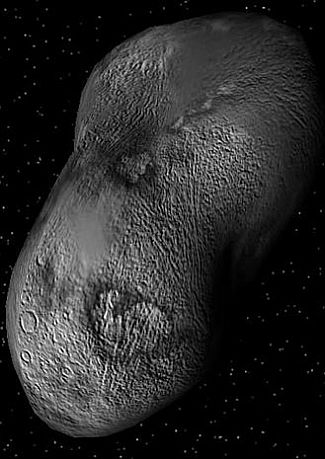
NASA detects and tracks asteroids and comets passing close to Earth using both ground and space-based telescopes.
#Doomsday asteroid 2036 series
Tholen, two of the asteroids co-discoverers are also fans of the science fiction television series Stargate SG-1. He is the Uncreator, and is characterised as an evil serpent who dwells in eternal darkness and tries to consume Ra during his nightly passage.Apophis is the Greek name for the the enemy of the Ancient Egyptian sun god Ra.This made it eligible to be be named and on July 19th 2005, the asteroid was called 'Apophis'.One year after its discovery, the asteroid was given the idenitfication number of 99942 in 2005.The potential planet killer named after a science fiction villain The science of predicting asteroid orbits is based on a physical model of the solar system which includes the gravitational influence of the sun, moon, other planets and the three largest asteroids. 'Updated computational techniques and newly available data indicate the probability of an Earth encounter on April 13, 2036, for Apophis has dropped from one-in-45,000 to about four-in-a million.' 8, 2013: At about 36 hours from the minimum distance (9.3 million miles from Earth), potentially hazardous asteroid Apophis was imaged again with the Virtual Telescope 'Apophis has been one of those celestial bodies that has captured the public's interest since it was discovered in 2004,' said Steve Chesley at NASA's Jet Propulsion Laboratory in Pasadena, California. Indeed, while scientists have ruled out any possibility of a cataclysmic collision - there remains a very real chance of the asteroid Apophis smashing into Earth in 2036. 'Alone among all these near-Earth asteroids that have passed our way in recent years, Apophis has generated the most concern worldwide because of its extremely close approach in 2029 and potential impact, albeit small, in 2036,' said Slooh president Patrick Paolucci. The video streams from Slooh Space Telescope and Virtual Telescope Project will show Apophis as a moving light streaking across the sky - although scientists have said that sadly the large space rock is too small to be seen through home telescopes.
#Doomsday asteroid 2036 free
In addition to the latest findings two free webcasts will stream live views of the asteroid as it passes, filmed from telescopes in Italy and the Canary Islands. 'The 20 percent increase in diameter … translates into a 75 percent increase in our estimates of the asteroid's volume or mass,' study leader Thomas Müller of the Max Planck Institute for Extraterrestrial Physics in Garching, Germany, said in a statement.

This image shows the asteroid in Herschels three PACS wavelengths: 70, 100 and 160 microns Scroll down for video ESAs Herschel Space Observatory captured asteroid Apophis in its field of view during the approach to Earth on January, 5-6, 2013. Whizzing past Earth at the relatively close distance of nine million miles tonight, Apophis is being closely tracked because of a 2004 study that predicted the rock has a 2.7 percent chance of hitting Earth in April 2029, which was later revised to 2036. Long billed as a potential cause of an Extinction Level Event (ELE) for humanity, today ESA officials announced that its Herschel Space Observatory discovered that the asteroid is 1,066 feet wide, 20 percent larger than the previous estimate of 885 feet.


 0 kommentar(er)
0 kommentar(er)
